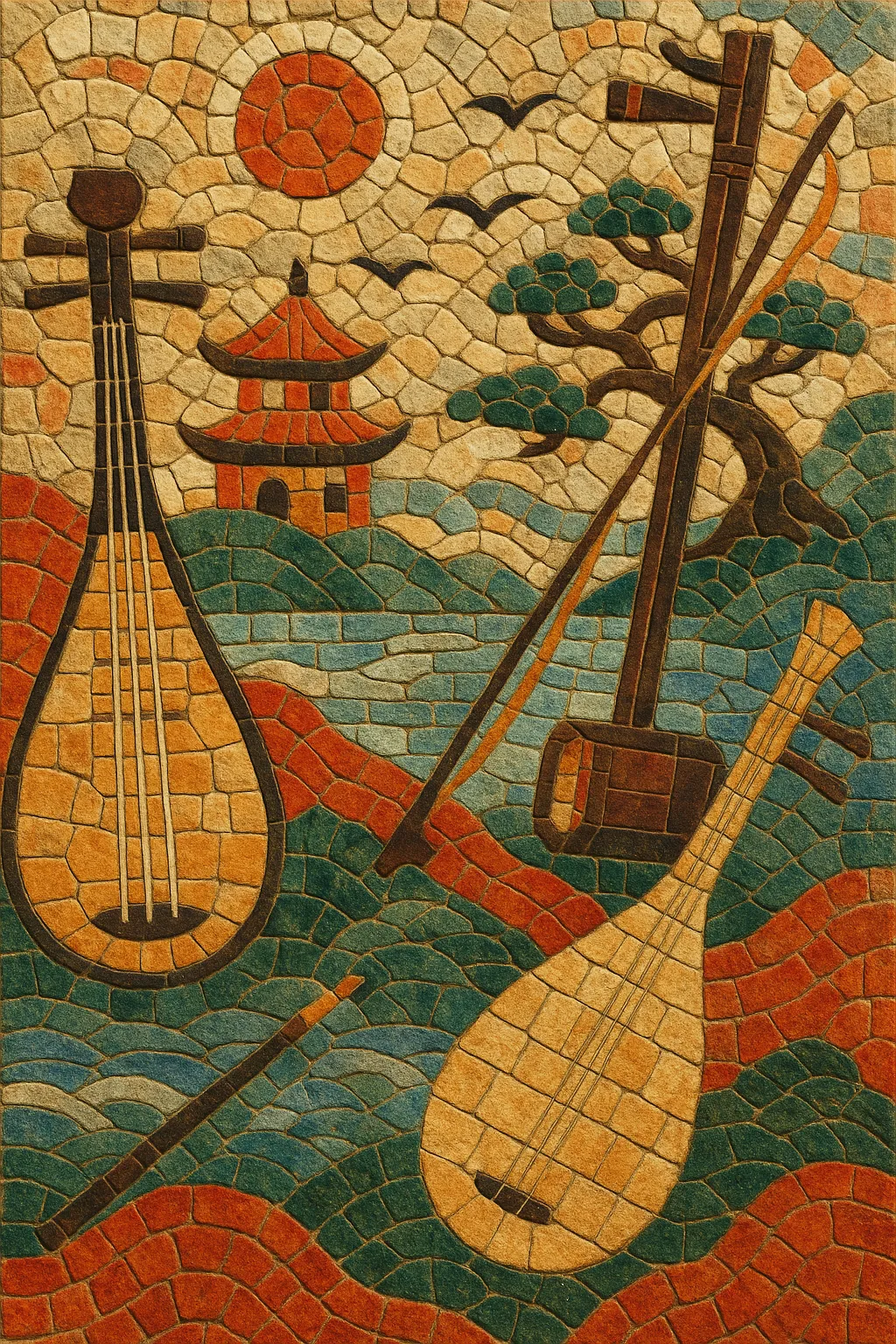Zhongguo feng (中国风, literally “Chinese style”) is a Mandopop subgenre that fuses traditional Chinese musical idioms with contemporary pop, R&B, and hip‑hop production.
Signature traits include pentatonic melodies, ornamented vocal lines that reference opera and folk singing, and the use of iconic timbres such as guzheng, erhu, dizi, and pipa. Lyrics often invoke classical poetry, historical imagery, and landscape aesthetics, while modern drum programming, harmony, and song forms keep the music aligned with mainstream pop.
Popularized in the early 2000s by Taiwanese Mandopop, the style became a recognizable aesthetic that bridges heritage and modernity across Greater China and the global Chinese diaspora.
Early experiments with blending Chinese traditional elements into pop existed in the 1990s, but the concept solidified as a coherent pop aesthetic in the early 2000s. Taiwanese Mandopop provided the industrial base: singer‑producers and lyricists began crafting songs that paired pentatonic melodies and classical imagery with modern R&B/hip‑hop beats and pop forms.
Jay Chou’s hit streak—often in collaboration with lyricist Vincent Fang—brought zhongguo feng to mass audiences (e.g., “东风破,” “发如雪,” “青花瓷”). In parallel, Wang Leehom’s “chinked‑out” concept framed a similar fusion through a hip‑hop/R&B lens, while groups and soloists across Greater China released singles and OSTs invoking courtly or historical atmospheres. By the end of the decade, the sound had become a staple Mandopop flavor.
Mainland Chinese TV shows, film/TV drama OSTs (wuxia/xianxia), and streaming platforms amplified demand for Chinese‑styled pop ballads and mid‑tempo tracks. Producers widened the palette—incorporating EDM drops, trap hi‑hats, and cinematic scoring techniques—while vocalists refined ornamentation drawing from opera and folk styles. Indie and internet scenes also adopted the aesthetic, spawning bedroom‑produced and crossover iterations.
Short‑video apps and Bilibili/NetEase communities boosted “国风” (national‑style) content, from pop ballads to EDM hybrids. Vocal‑synthesis communities (Chinese Vocaloid/AI voicebanks) popularized zhongguo feng templates at scale, and crossovers with hip‑hop and electronic subgenres became common.
Zhongguo feng is celebrated for revitalizing traditional culture in pop. Critics sometimes point to surface‑level pastiche, but the best works embed modal/harmonic craft, timbral authenticity, and poetic depth—sustaining the style’s appeal across generations.


